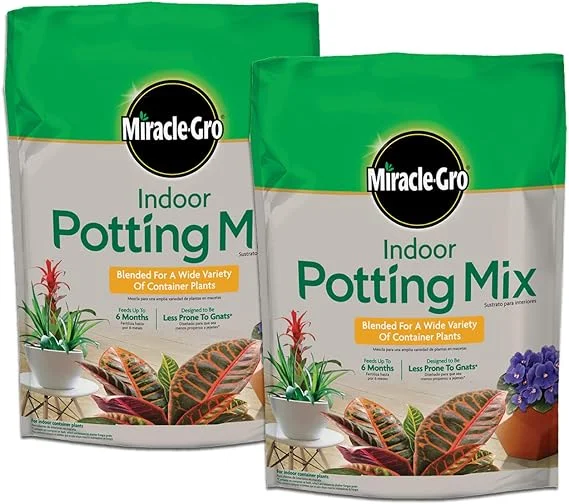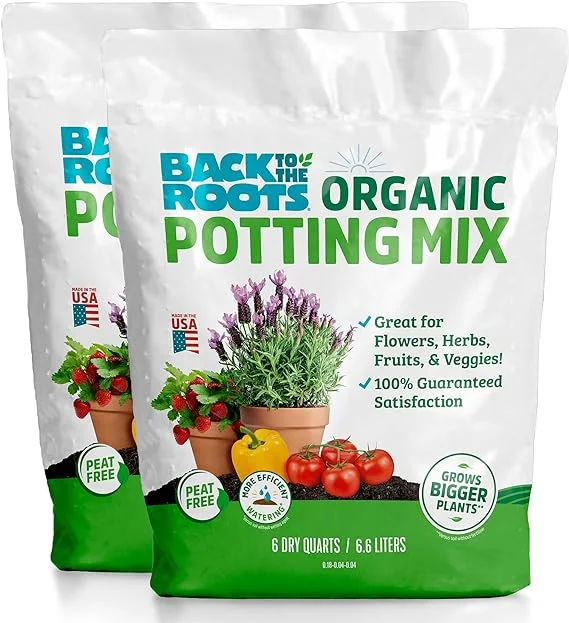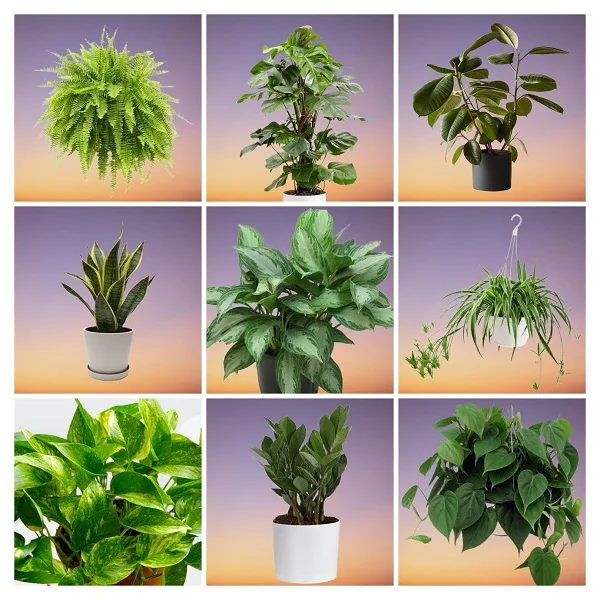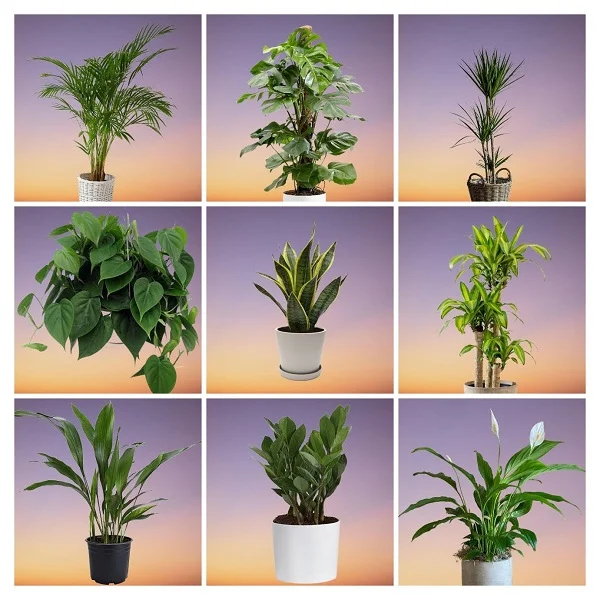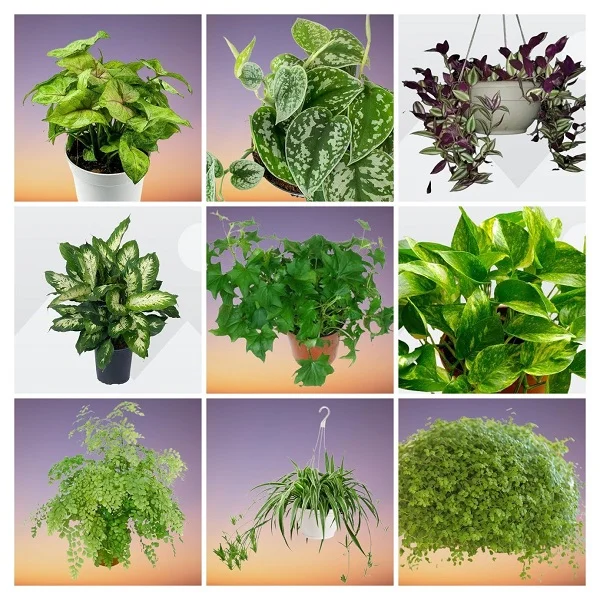Piggyback Plant (Tolmiea menziesii) Indoor Care, Propagation, Problems and Remedies
Some links in this post may be affiliate links
Piggyback Plant (Tolmiea menziesii) thrives in bright indirect light, average warmth, moderately humid conditions and consistently moist, rich, well-drained soils coupled with monthly feeding during the growing season.
Whether you are a beginner plant enthusiast or an experienced gardener, this guide will provide you with everything you need to know about Piggyback Plant care, propagation, common problems, and their remedies. But first, let's look at the characteristics of Piggyback Plant.
Tolmiea menziesii also called Youth on age, Pick-a-back-plant or Thousand Mothers is an easy to grow houseplant that relishes a cold, well-ventilated sunless environment.
Piggyback Plant is a fast-growing, compact mound of downy, bright green leaves and about 9 inches high. Based on its size and growth habit, it is one of the popular small low-light plants for an office desk.
The Tolmiea menziesii bears plantlets at the base of mature leaves which causes the leaves to bend under the weight and touch the ground hence the common name, 'Piggyback'. These plantlets will develop roots on touching the ground and become seperate plants.
Pick-a-back-plant has hairy, five to seven-lobed leaves and a capsule fruit containing spiny seeds. However, it is unlikely to bear seeds when grown indoors.
The long leaf stalks give Thousand Mothers Plant a trailing appearance which makes it one of the best plants for a hanging basket.
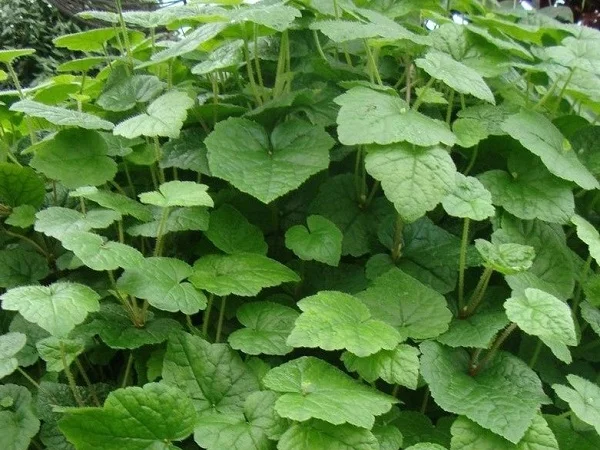
Botanical name: Tolmiea menziesii
Family: Saxifragaceae
Common names: Piggyback Plant, Youth on age, Pick-a-back-plant, Thousand Mothers
Origin
Tolmiea menziesii is a perennial plant native to West Coast America, occurring in northern California, Oregon, Washington, British Columbia and southern Alaska.
Is Piggyback Plant poisonous?
Piggyback Plant is non-toxic to humans and pets as indicated by ASPCA. The plants are safe for cats, dogs and other pets.
Tolmiea menziesii Care Indoors
How do you take care of Piggyback Plant indoors?
To care for Piggyback Plant (Tolmiea menziesii), give it bright indirect light, average warmth of 15-260C, moderate humidity of 50-55% and consistently moist, fertile, well-drained soils coupled with monthly feeding during the growing season.
Tolmiea menziesii care requires pruning to keep it neat, to control growth and to rejuvenate growth. Repotting is necessary when it becomes pot-bound. Keep on reading for more on these growing conditions and how to achieve them.
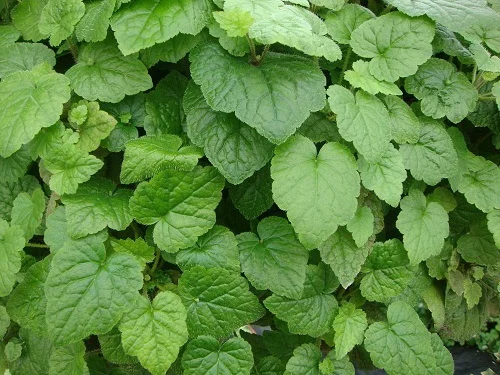
Watering
Water your Piggyback Plant liberally during the growing season while allowing the top 1-2 inches of soil to dry out between waterings. Keep the soil consistently moist but not soggy to avoid yellowing leaves and mushy stems.
Decrease watering in the cold season to keep the soil slightly moist. Do not allow the soil to dry out completely to prevent wilting and drooping leaves.
Ascertain that the pot has a drainage hole to prevent the soil from getting soggy as it may result in root-rot and eventual death of the plant.
Light Requirements
How much light does a Piggyback Plant need?
Piggyback Plant needs bright indirect light to thrive. It will grow in semi-shade, but the growth will be much slower. Keep it away from direct sunshine to avoid scorching of the leaves.
If your plant becomes leggy, the light is too little. Move it to a brighter location or use grow lights if you do not have adequate light in your home.
Pro tip: Rotate the pot regularly to ensure that the plant receives light on all sides for uniform growth and prevent leggy growth.
Temperature and Humidity
Piggyback Plant flourishes in cool to average warmth of 15-260C with a minimum of 100C. Keep it away from cold drafts emanating from heat sources, AC units, windy doors and others as they can cause reduced growth and leaf drop.
Piggyback Plant has no need for extra humidity. Moderate air humidity of 50-55% is ideal for this Plant. However, if the humidity is too low, it may lead to brown leaf tips and edges. Therefore, to step up humidity, set the pot on a wet pebble tray or use a cool mist humidifier.
Pro tip: Ascertain that there is proper air circulation to minimize fungal diseases infestations.
Fertilizer
Feed your Piggyback Plant with a balanced, liquid fertilizer every 4 weeks during the growing period for lush growth. Avoid too much fertilizer as it can result in leggy growth.
Do not feed in the cold season (fall and winter) as growth is minimal and feeding at this time may lead to fertilizer burn; brown leaf tips and edges.
Potting Mix
The best potting mix for Piggyback Plant should be rich and well-draining to prevent it from getting soggy while providing the required nutrients. A blend of 50% potting soil, 30% peat moss and 20% perlite is ideal for this plant.
Repotting
Repot your Piggyback Plant during the growing season only when the plant has become pot-bound. Use a pot one size larger than the current one.
Ensure that the pot has a drainage hole to prevent the soil from getting soggy as it can lead in root-rot. Tolmiea menziesii is perfect in a hanging basket where the the stems can cascade downwards beautifully. Take a look at these hanging planters with macrame hangers on Amazon.
Pruning & Grooming
Pruning Piggyback Plant involves:
- Regular removal of dead foliage to maintain the plant neat and tidy.
- Regular pinching off of the growing tips to encourage a bushy, compact growth.
Clean the leaves regularly with a soft brush to keep them clean and neat as well as discourage pest and disease infestations.
Piggyback Plant Propagation
How do you propagate Piggyback Plant?
Piggyback Plant (Tolmiea menziesii) propagation can be done during the growing season (late spring through summer) by plant divison or from the plantlets which form at the base of mature leaves.
1. Propagating Piggyback Plant by plant divsion
- Water the plant thoroughly 1 day before to make it easier to divide and also hasten establishment. A well hydrated plant suffers less shock and takes a shorter time to take root.
- Slip the plant out of its pot, remove excess soil, disentangle the roots and cut away any dead roots.
- With a clean, sharp pair of pruning scissors or knife, carefully divide the plant into several sections.
- Select a 6 or 8 inches pot and ensure that the pot has a drainage hole to prevent the soil from getting soggy to avoid rotting.
- Fill the pot with well-drained, potting mix and moisten the soil slightly.
- Make a hole in the center of the pot. Ensure that the hole is slightly wider than the root base of the section.
- Place the section in the previously made hole and lightly firm the soil around the base. Ensure to maintain the section at the same soil level it was in the previous pot.
- Position the pots in a warm, well-lit place away from direct sunlight.
- Maintain the soil moist until the new plants are well established.
- Once the plants are well established, place the plants in bright indirect light and begin routine care.
2. Propagating Piggyback Plant from plantlets
- Peg down the Piggyback Plant plantlets in the soil while still attached to the mother plant.
- In a few weeks, roots will grow at every point where the plantlets touch the soil surface.
- Once rooted, fill a wide, shallow pot with a free-draining soil that is rich in organic matter. Ensure that the pot has a drainage hole to prevent rotting.
- Moisten the soil slightly and make a hole in the center of the pot.
- Cut the rooted plantlet and plant in the hole made above and lightly firm the soil around it.
- Place the pot in a warm, well-lit place away from direct sunlight.
- Maintain the soil moist through out until the new plants are well established after which you can begin routine care.
Pro tip: For a fuller plant, transplant several plantlets into one pot.
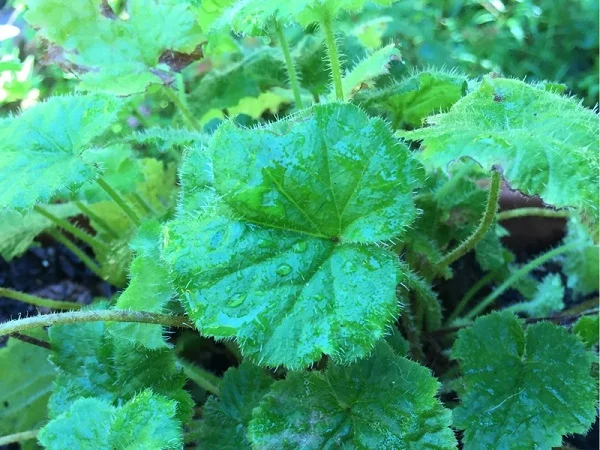
Tolmiea menziesii Growing Problems
Piggyback Plant (Tolmiea menziesii) growing problems include plant dying, brown leaf tips and edges, leaf spots, leggy stems, pests and diseases among others. Read on for more on these problems, their remedies and solutions.
Plant dying
Why is my Piggyback Plant dying?
Your Piggyback Plant is dying due to root-rot which is prevalent in soggy soil. It is characterized by yellowing and wilting of the leaves which is rapidly followed by browning and plant collapse.
How to revive a Piggyback Plant
- Carefully slip the plant out of its pot and inspect the roots.
- Trim brown-black, mushy roots and treat the healthy roots with a copper-based fungicidal solution. Ensure to follow the manufacturer's instructions.
- Disinfect the pot with the fungicidal solution or use a fresh pot to repot the plant in fresh free-draining soil.
- Do not water the plant and keep it dry for some time before resuming watering
- To prevent root-rot in the future, ensure that the pot has a drainage hole and the soil is well-draining.
- Cut down on watering in fall and winter as growth is minimal at this time; maintain the soil slightly moist.
Pests
Common pests in Piggyback Plant are aphids and mealybugs. Isolate the affected plant to prevent spread to other plants and treat it with neem oil or insecticidal soap as per the manufacturer's instructions.
Diseases
Piggyback Plant is prone to root-rot disease which is prevalent in soggy soil and powdery mildew which is promoted by damp conditions. Ensure that the pot has a drainage hole to prevent the soil from getting soggy and avoid misting the leaves.
Yellow leaves
Some of the causes of yellow leaves in Piggyback Plant are overwatering and soggy soil. Do not water on a schedule. Water only when the top 1-2 inches of soil feel dry to the touch. Always confirm that the pot has a drainage hole and the soil is well-draining.
Dry and shrivelled leaves
Dry and shrivelled leaves on Piggyback Plant are caused by underwatering. Water when the top 1-2 inches of soil dry out. Never allow the soil-ball to dry out completely.
Pale leaves and leggy stems
Pale leaves and leggy stems on Piggyback Plant are due to low light Move the plant to a brighter spot or instal a grow light if the natural light is inadequate.
Brown leaf tips and edges
Brown leaf tips and edges in Piggyback Plant are due to dry air. To raise humidity, set the pot on a wet pebble tray, use a cool mist humidifier or group the plants together.
Brown leaf spots
Brown leaf spots on Pggyback Plant are due to scorching from exposure to direct sunlight. Place the plant in a shadier spot or instal a light curtain to filter the light.
Conclusion
Piggyback Plant (Tolmiea menziesii) is a fantastic choice for houseplant lovers due to its easy care, unique propagation method, and vibrant foliage.
By providing the right lighting, watering schedule, and soil conditions, you can enjoy a healthy and thriving plant. With proper maintenance and preventative care, your Piggyback Plant will remain lush and lively for years.
You liked it? Share on social media.
Related Content
Amazon Associates Disclosure
Homeplantsguide.com is a participant in the Amazon Services LLC Associates Program, an affiliate advertising program designed to provide a means for sites to earn advertising fees by advertising and linking to amazon.com.

